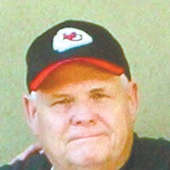The 'Bell' telephone revolution
This Friday, the world will acknowledge and celebrate the 141st anniversary of Alexander Graham Bell's first telephone call. I wonder how amazed he would be, if he could witness the current state of his invention?
Perhaps I should give some background for my decision to use this topic for this week's column. As I have stated in the past, I write these stories with a bit of chagrin. I access my MacBook Air laptop to write my columns. I shamefully admit that I use all the conveniences it offers such as the automatic spell checker. I never cease to be amazed when I think of all those famous authors I hold in such high regard who wrote their stories in long hand or on an old fashioned typewriter!
Before I begin writing I read the Daily Mail online on this same computer. I also check my email, Facebook, messages and verify my online banking and credit card accounts to be sure there has been no identity theft. I also exchange several text messages on my iPhone and forwarded them to others who I feel would be interested in their content.
My involvement with this new electronic world has created a paradox of sorts for me. While I have always had a love affair with history and enjoy reading about people like Bell I am by nature a "futurist."
When it comes to anything new I like to try it as soon as possible.
In Bell's time, there were a lot of negative responses to his invention. That has been the norm for almost all new inventions over the years. When the first automobiles were built there were actually many prohibitive laws enacted to curb their use.
One thing that history teaches us about new inventions is that there is a constant and consistent acceleration in the development of new technology. Take writing for example. For thousands of years people known as "scribes," spent countless hours painfully transcribing all types of documents by hand. Without them much of what we know of the past would have been lost.
The flow of technology in words continued to rapidly advance with each new invention. These included such items as the printing press, the typewriter, the word processor and the fax machine. Each of these had its day and time and each eventually was replaced by a new more efficient invention.
There are literally thousands of apps (short for applications) that you can download and use on your computer or cell phone. I use several of them daily. There is a new one that I am going to check out soon. It is an app that allows you to use your phone to scan and download a variety of documents. You can then insert information (example would be let's say an application of some type). You can then forward this information or document to someone such as a business, without using the postal service or a fax.
I am not sure what Mr. Bell's attire would have been in 1876, but if he had a modern day cell phone he could actually get a tailored suit. Many companies now have apps that use the camera function on your phone, which then allows you to send in a detailed digital map of your body. The clothing company then tailors the garment to the exact specifications of the picture.
My age and life have progressed and coincided in relation to the many changes in our telephones. As a young kid, my family lived on a farm east of Highway 71, on County Road DD. We had a wooden box crank telephone that also had a hand held ear device and a speaking tube on the box. We were part of a "party line" that included most of our neighbors. If you wanted to know what your neighbors were saying about you, all you had to do was pick up the phone and listen.
In Nevada, my Grandmother had a single desk style phone. There were no dials back then on either her phone or our country phone. When you wanted a local call on our country phone you used a crack handle on the side to initiate either a long or a short ring. I can still remember our call sign on that old phone was "two long rings and one short!"
When you picked up a Nevada phone in those days an operator answered. There were two types of numbers for local phones. Each had three numbers and a letter. There were only two letters, "J" and "W" (I may have those letters wrong as my memory is getting a bit rusty with time).
In the late 50s to early 60s, the phone company built their new office that is still there on West Walnut Street. They began to offer rotary dial phones. I remember a field trip we took from grade school to see the equipment in the building.
By the 70s, most homes began to have more than one phone but you were still limited by how far you could go by the attached phone cord. In the 80s, we began to use our first cordless phones. I still use these for my landline, but like many people I can foresee the time when I will only have a cell phone.
One hundred and forty one years is not long when compared to the history of mankind in total. We have come a very long way since that first phone call in Bell's invention office.
What we should all learn from this view of phone history is that there is a lot more to come. I won't try to predict what those changes might be, but I am quite certain that they will happen. We must learn to embrace them and not fear the future.

